
Your dog has bad breath
Dog breath is never minty fresh, but sometimes that stink is a signal for a life-threatening problem. Bad dog breath is caused by the bacteria that form plaque on your pet’s teeth. But those bacteria can travel into the nasal passages and sinuses, leading to respiratory problems. If they make it into the blood stream, they could wreak havoc in the liver, kidneys, or heart. Brush your dog’s teeth daily and give him treats or toys made especially for dental hygiene to prevent those types of dog illness symptoms. Find out more reasons for your dog’s bad breath.
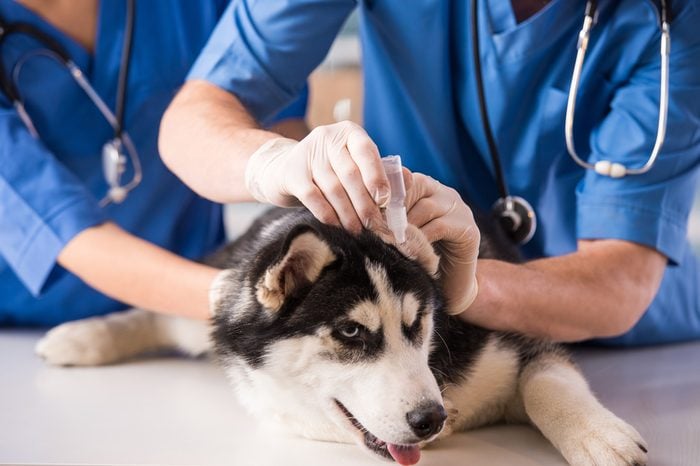
Your dog’s ears droop
A dog’s ears may droop if he feels sad—or has an ear infection. Dogs can develop three types of ear infections: outer, middle, and inner. Symptoms of outer ear problems—drooping ears, redness, discharge, and a bad odor—require a trip to the vet. If not treated, outer infections can turn into middle and inner ear infections, which may cause hearing loss. Here are some unbelievable facts you never knew about your pooch.
While discussing dog ears, we must guide you to our list of adorable dogs with big ears and dogs with floppy ears!

Your dog has black patches on his gums
According to the Banfield Pet Hospital network, dental disease affects 93 percent of dogs over the age of three. When food particles and bacteria aren’t cleaned off a dog’s gums, they get inflamed and plaque can form. That plaque can turn into gingivitis and, in severe cases, tooth loss. If your pet’s normally pink gums are inflamed or develop black patches, contact your vet. While black spots on your dog’s tongue are usually not a cause for concern, you could be seeing dog illness symptoms. These are some secrets your pet can’t tell you.
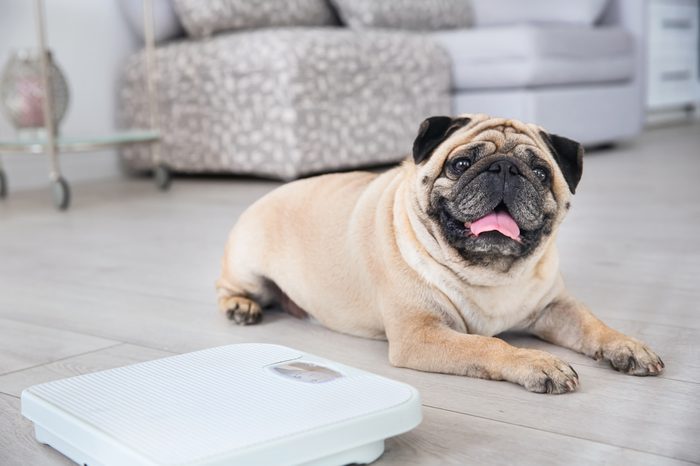
Your dog has no waist
An hourglass figure is a quick indicator of a healthy dog. But if your dog has no tucked-in area between her rib cage and hips, she’s probably overweight. The Association for Pet Obesity Prevention estimates that 54 percent of dogs in America are overweight, and like humans, this makes animals vulnerable to other medical complications, like cancer, diabetes, and kidney disease. It can even decrease life expectancy by 2.5 years. All dog owners should know these 12 foods that could kill your dog.

Your dog’s eyes are cloudy
Though it’s not conclusive, cloudy eyes are a strong indicator of cataracts. If the cloudiness covers more than half of the eye lens, your dog’s vision becomes obstructed and he could eventually go blind. Cataracts can also be a sign of diabetes if your dog shows other symptoms like drinking and urinating more, or engaging in common pet behavior problems. A third cause is nuclear sclerosis, a benign aging change that fortunately doesn’t really impair vision. These signs of cancer in dogs are important to keep track of. Did you know that dogs have these awesome superpowers?
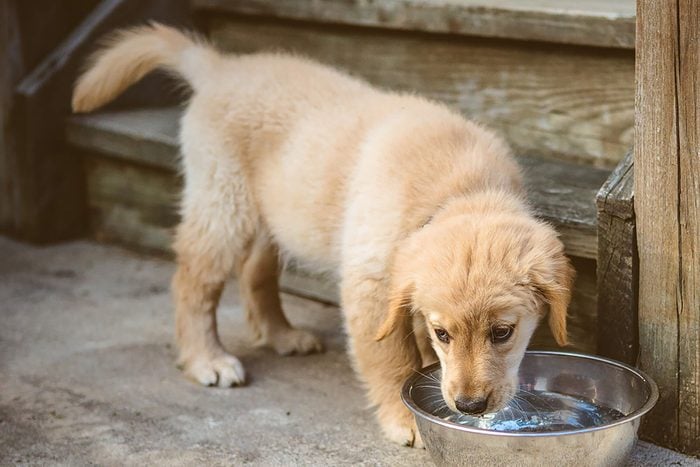
Your dog’s bladder is out of whack
There may be a medical explanation for why your house-trained dog suddenly had an accident inside. Excessive urination (polyuria) and excessive drinking (polydipsia) are symptoms of kidney failure, diabetes, and liver diseases. For instance, if your pet is dehydrated, her kidneys won’t be able to retain water, so she’ll urinate more frequently. It’s also important to know when your pup is content–learn these telltale signs that your dog is happy.
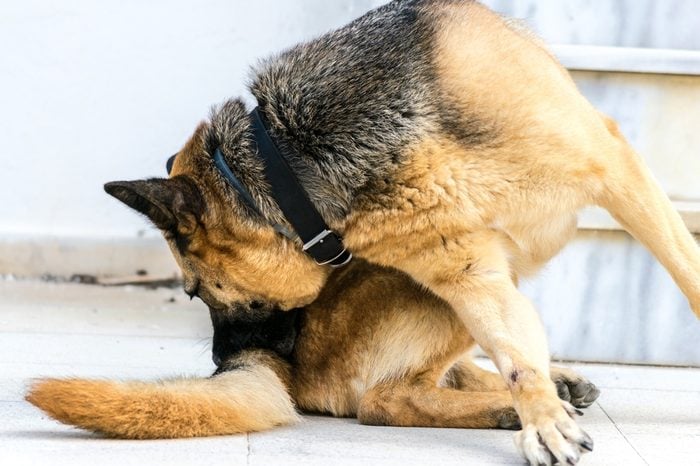
Your dog keeps chasing her tail
You read that right. If your dog runs in circles more often than normal, she could have an inner ear infection called labyrinthitis. It affects a dog’s posture, balance, and coordination, so she may seem dizzy for no apparent reason. However, if your dog is older, she could have idiopathic vestibular syndrome, which usually appears suddenly and can cause dizziness to the point of incapacitation. It has no known cause and could require hospitalization. Don’t miss these secrets your dog’s tail is trying to tell you.
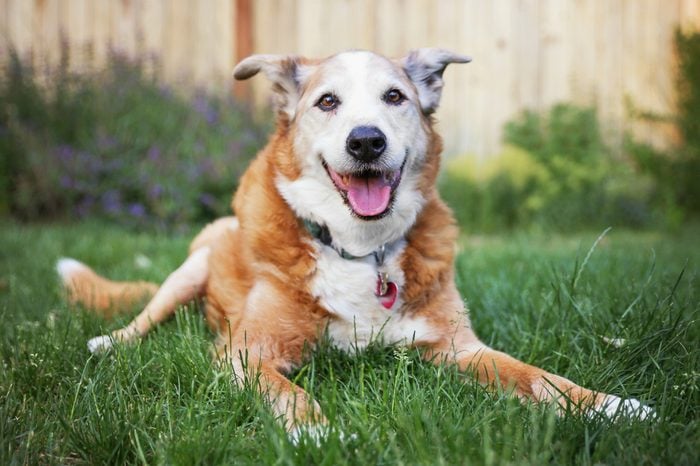
Your dog’s breathing hard
Panting is a dog’s way of cooling down, but labored breathing, or dyspnea, can also be one of the dog illness symptoms that indicate hint life-threatening problems. Dyspnea can be caused by complications in the nose, throat, lungs, or chest. Your dog may not be getting enough oxygen in his bloodstream. Difficulty breathing is also a symptom of heartworm disease, which can cause fatal damage to the lungs. Luckily, the disease is treatable if detected early enough. Pay attention to these signs that your dog is smarter than you think.

Unusual doggie sneezes
Like humans, dogs sneeze clear nasal discharge when they have allergies. However, if the mucus is gray and cloudy, thick and green, or bloody, those dog illness symptoms are cause for concern. Your pet could have a fungal infection or nasal cancer. Your vet will likely perform an x-ray or CT scan to confirm the diagnosis. Read up on these 53 mistakes every dog owner makes. Also, make sure you know which plants are poisonous to dogs.
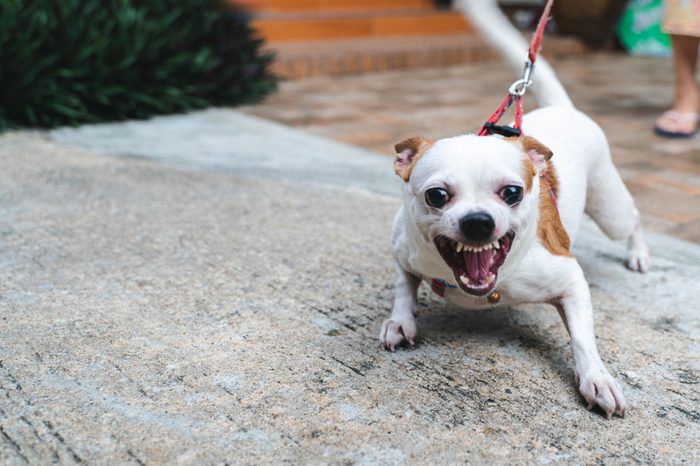
Your dog’s aggression surprises you
Any other day, your dog is polite and well-behaved. But today, he’s snarling, howling and growling, even at people he knows. What happened? Unprecedented aggression could be a sign of hypothyroidism, seizures, or brain diseases. Your dog could also be in severe pain, acting aggressive to keep people from touching him. All of these potential causes require an urgent visit to your vet.
Next: Explore the most popular dog breeds in America.